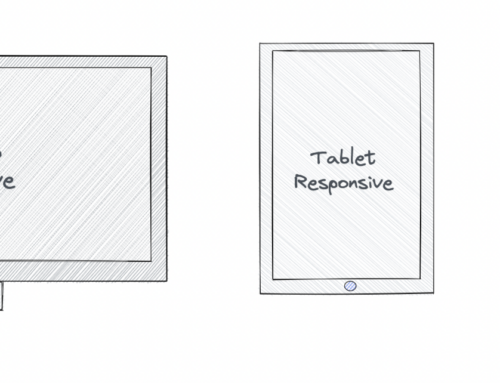According to the Anatomy of Work Index, 71% of knowledge workers experienced burnout at least once in 2020. Most of us have at some point in our lives experienced burnout and that definitely zaps the energy out of our career, friendships, and family interactions. Identifying burnout and avoiding it – though tough for engineering leaders – was easier to manage when teams met together daily. Remote environments present a challenge that requires massive grace for leaders to identify and work through.
Admitting that burnout is real and can happen to anyone at any time is the first step for engineering leaders to take significant steps in identifying minute signs within the team. If not stopped in due time, it could eat up the individual, team, company, and customers, along with unseen damage to families and friends. Therefore, it is vital for leaders to recognise and avoid team burnout at atomic stages.
So how do we as engineering leaders tackle and avoid burnout? Here are a few thoughts:
Avoid burning out yourself
It’s tough to find the energy you need to help others when you yourself are at your limits. Before you can help your team members manage their stress, you need to manage your own. Instead of working day-in and day-out, you need to stop, look around, and figure out how you’re going to help your people get what they need. A good starting point is to take care of your own physical and mental health. Eat healthy, wholesome food; spend time with your loved ones; exercise regularly; get plenty of sleep at night; take time to meditate and find someone whom you can vent out your stress — preferably “not your boss”.
Whitney Johnson, the author of Build an A-Team says – “Your team is picking up on your stress, and it’s making everything worse. Taking care of yourself is not an indulgent luxury; it’s a matter of self-preservation.”
Tackle burnout together with your team
There definitely will be situations in your team, when pressures rise, deployments will fail and stress levels will rise. Engineering leaders should openly recognise this before and demonstrate that you take it seriously. Make it a team goal to keep stress under control. Talk about it openly during a retrospective and make sure the team brings up solutions to tackle this together.
Our team at Lockstep works remotely – but had a team meet up recently – which was definitely a great time for the team to be open about our lives behind our laptops. Conversations with team members post the meetup were different, there was an understanding with each other that we had each other’s backs. Tackling burnout takes team-effort and engineering leaders can help facilitate teams to tackle it together.
Exhibit Compassion
We live in an imperfect world with imperfect people. Recognising that no one is perfect is key for engineering leaders to show compassion to the teams that we lead day-in and day-out. In our bid to attain perfection, we need to make sure that we have a space to handle imperfections compassionately. Recognize, both inwardly and publicly, “that all of us are doing the best we can with the resources we have been given.” This doesn’t mean that you’re lazy or letting yourself “off the hook.” Rather, you’re creating a psychologically safe place for yourself and others. Yes, the workload is intense. And yes, big, high stakes projects are daunting. Tell your team, “We are in this together, and I know we can deliver.”
Prioritise people over productivity. It’s important to understand that things like overloading people with work, playing favorites, mismatched values, lack of workplace community or autonomy or not providing adequate resources will result in burnout. And in this new environment where standard coping mechanisms like going to the gym, getting together with friends, etc., isn’t always an available option, many are struggling to find balance. Why not take time to understand people and set them up for success?
Set a good example
You also need to think about the behaviors you’re modeling to your team. Set a good example by making downtime a priority. Show your team that you don’t always operate in full-throttle mode 24-7. Your people need time to rest and rejuvenate and disconnect from work – especially when they are overwhelmed.
Be an example of an employee who creates time for work, time for rest, and time for play. Employees, especially those working from home for the first time, may not have a role model for this new experience. Get them to honor all three and to understand by doing so they’ll be far more productive and happier in all facets of life.
Provide clear, realistic expectations – Focus on the why
More often than not team members burnout when they really do not have a clear vision of the end goal they are looking to achieve and what the is the purpose of their work. They feel stressed and tired, and yet continue to work and work and work, while not knowing what value their work brings. This is also a key driver for resignations. This can create a toxic culture, where employees lose the sense of purpose of why and what they do. Here, clarity on what must they do and the impact to users to make a difference.
As a leader, you need to develop a shared sense of why — as in, why are we driven to accomplish the mission? As a boss, it’s your job to galvanize your team. Remind them of the objective and why it’s important to the organization and your customers. When people have shared values and connections, they are more likely to feel positively about their work.
Provide very clear and realistic expectations to your team. Make sure those expectations are re-iterated and understood clearly. In turn, you must understand whether the expectations are too much or too little and recalibrate accordingly. Ensure that they have the resources they need to accomplish their goals. Show them their value and contributions to the organisation’s goals.
Go to bat for your team
If you and your team are going through a period with a heavy workload, it might be time to mention it to your leadership team and stakeholders. “It is your responsibility as a leader to advocate for your team within the context of your organization’s goals,” says Johnson.
Talk about the about the effect stress has on their morale and performance. Make sure the law of diminishing returns is understood and conveyed. Unwieldy workloads lead to mistakes and slippage. And those can be costly. Explain that you’re worried you might lose people who are valuable to the organisation. Then ask, “can this deadline be pushed back? Or can we think through an alternative solution?”
At the same time, leaders need to think through what needs to be done to manage unrealistic expectations. What are things that need to be done to effectively manage scope creep during sprints? Are there support mechanisms in place when team members fail to accomplish their tasks? When you see a drop in performance or a lack of enthusiasm – what is it that is bogging them down? Perhaps certain meetings can be discarded, or at least shortened.
Be optimistic and be a source of optimism
The world needs more optimistic leaders who learn to smile through the storm and encourage the team as they sail along. Making sure that you are oozing out positivity even through dry or stormy days is a big plus for the team. Asking the team how they are doing before getting onto status updates or talking about what’s happening in your family – are great icebreakers. Keep looking for the good in people and make sure you regularly acknowledge, recognize, and thank people for their efforts. Say, “I notice you did X. Thank you. I appreciate it.” Cultivate a feeling of community and social support. When your team hits a milestone or when a particular crunch time is over, celebrate. Acknowledge the accomplishments – the teams, as well as your own.
The engineering leadership at Lockstep takes effort to make sure a culture of freedom and responsibility is developed where team members thrive, grow, and enjoy their work. Avoiding burnout is a reality that we work for – both within ourselves and for the team.
Blog by: Elijah Mathew, Lockstep




